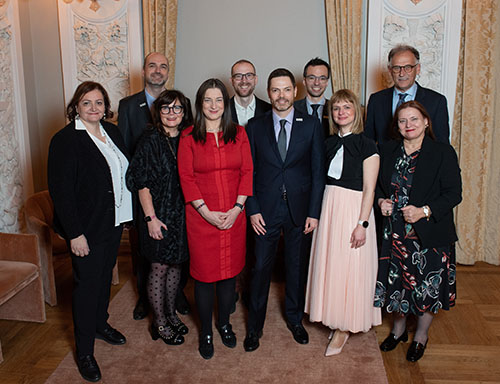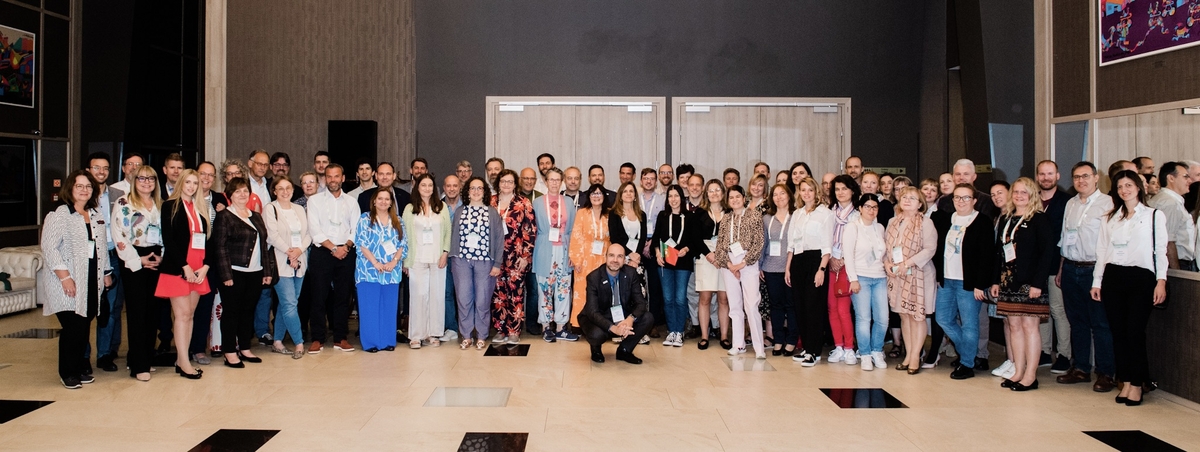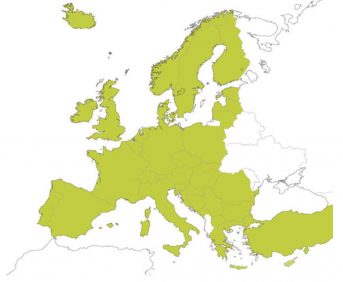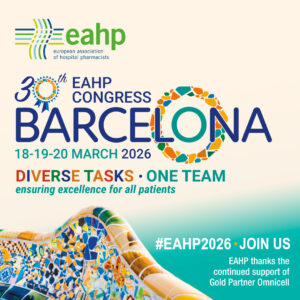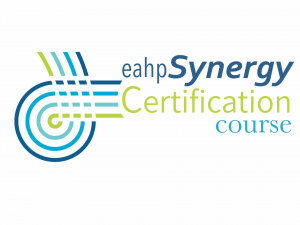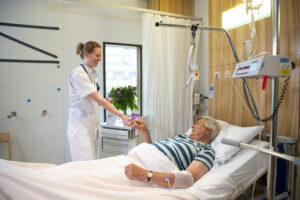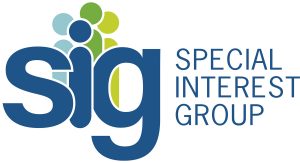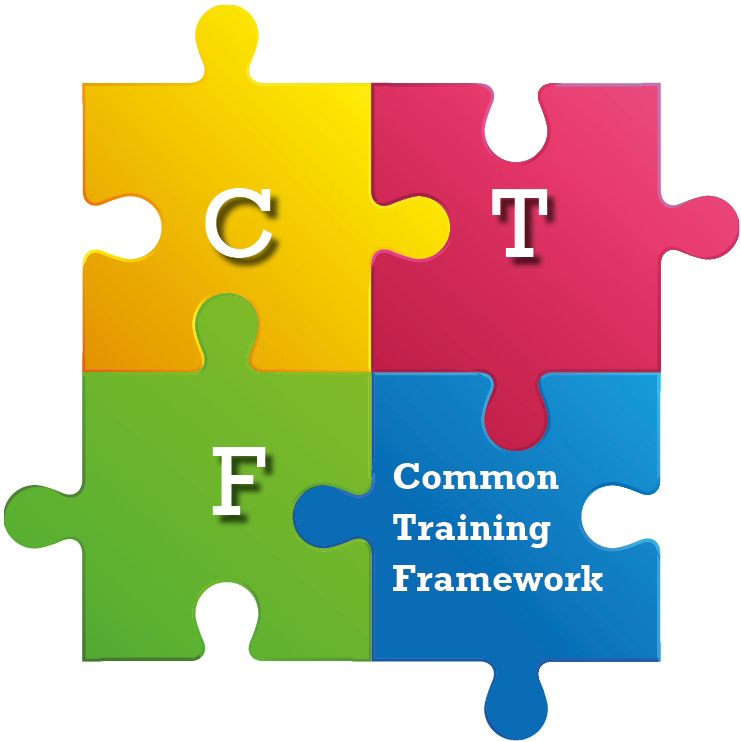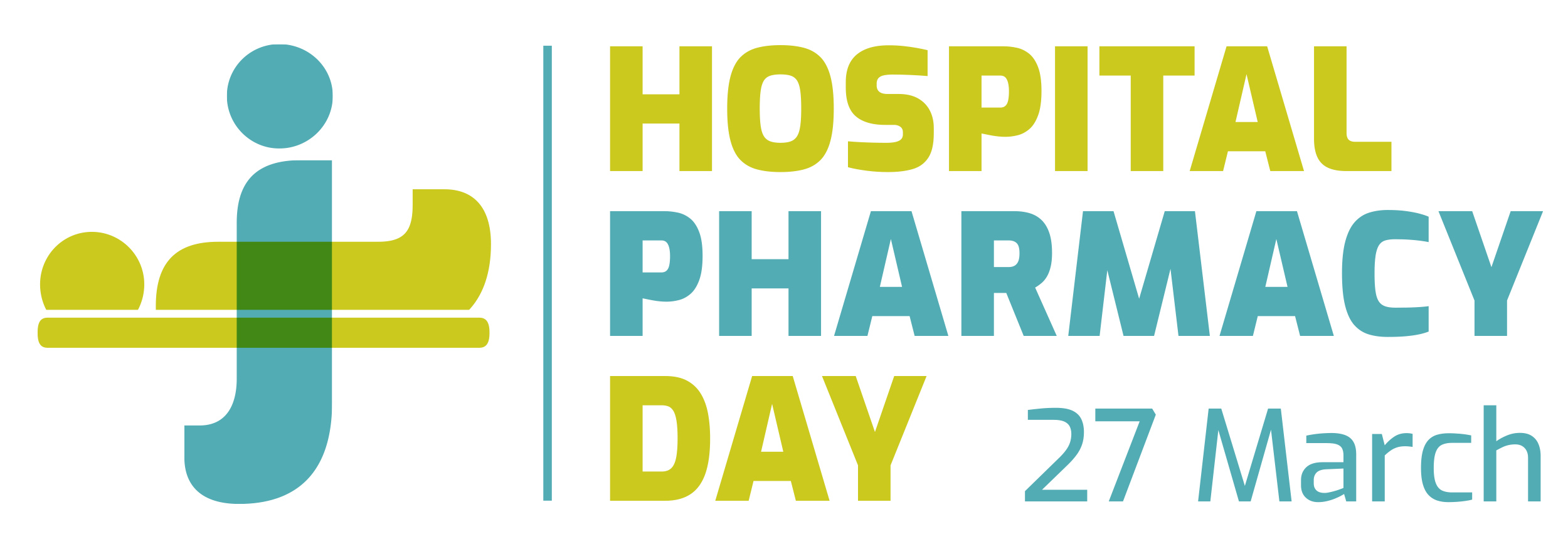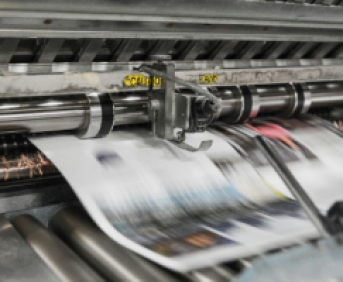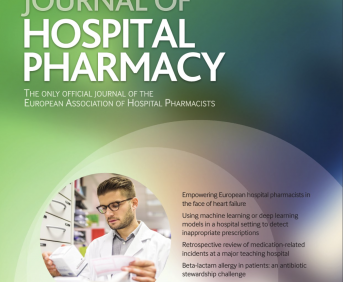Surveillance system for adverse events after COVID-19 vaccination
Pdf

European Statement
Patient Safety and Quality Assurance
Author(s)
Kornelia Chrapkova, Stanislav Gregor, Michal Hojny
Why was it done?
A passive surveillance system exists in our country, giving limited options for the reporting of adverse drug reactions (ADR) to our National Drug Agency (NDA). The current system does not consider different patient´s criteria such as, age, variety of disabilities and preferences and does not enable healthcare professionals to report ADR in an easily accessible and comprehensive way.
In addition, our aim was to provide support to patients during the pandemic lockdown when accessing their general practitioner was difficult.
What was done?
A surveillance system was created to encourage and facilitate the reporting of potential vaccine adverse events (VAE) after healthcare professionals and patients received a COVID -19 vaccine that was administered in our vaccination centre (VC).
How was it done?
Following patients receiving a COVID-19 vaccination they were sent a text message with an information that in case of VAE they could contact us via text message, email, fill an electronic questionnaire or call us.
We assembled a team of 10 pharmacists providing a non-stop service for reporting VAE. To ensure consistency in advice given to patients a manual was created for a management of the most common and likely VAE.
By liaising with the Information Technology Department, we created an electronic tool integrated into the hospital information system (HIS) for recording VAE. This enabled us to make a comprehensive report and sent it directly to the NDA. Consequently, an alert on each reported VAE after the first dose of vaccine was available for every clinician to maximise patient´s safety.
What has been achieved?
Between 4th January 2021 and 8th June 2021:
6 109 732 vaccines were administered throughout our country.
5402 (0,09%) VAE were reported to NDA.
43 409 vaccines were administered in our VC.
3 456 (7,96%) VAE were reported to our VC out of which 816 were rated as unexpected and 28 as serious.
What next?
Presenting of the results of the project will be used as a part of the education of healthcare professionals in our hospital. By this sharing of knowledge our aim is to enable and maximise patient’s safety and treatment. The integrated electronic tool for recording and reporting ADR will be also applied for all other medications
COVID-19: Guidelines for Infection Prevention and Control in a Hospital Pharmacy According to ISO 9001:2015
European Statement
Patient Safety and Quality Assurance
Author(s)
SUSANA SANCHEZ SUAREZ, JOSE ANTONIO VINAGRE ROMERO, MARIA ISABEL BARCIA MARTIN, CAROLINA AGUILAR GUISADO, MERCEDES GARCIA GIMENO
Why was it done?
To keep occupational health and safety during a crisis in which healthcare settings were overloaded and facing a critical shortage of skilled professionals, due to sick leaves (2,75% of total cases), and for the need to maintain high quality of care processes. These were a big challenge that required to adapt operating procedures. In addition, and due to the effect of COVID-19 on the general population (overall incidence rate of 10.596 per 100,000 people) and in healthcare systems, the Spanish Ministry of Health (SMH) issued a technical document establishing a series of recommendations for COVID-19 infection prevention and control in patients medical assistance. This practice was designed to bring together national guidelines from the SMH that aimed to reduce COVID-19 impact, both in healthcare workers and general population, and meet ISO 9001:2015 requirements in SOP of a HP within a general hospital
What was done?
In order to ensure safe systems of work (SSoW) in the hospital pharmacy (HP) during the COVID-19 pandemic, specific operating procedures (SOP) were adopted in order to prevent the risk of contagion in daily operations for both patients and staff, according to the norm ISO 9001:2015
How was it done?
Four critical areas were identified according to risk management: High-risk areas: Preparation Area (PA) and Outpatient Dispensing Area (ODA); medium-risk area: Pharmacy Administration Area (PAA) and Inpatient Dispensing Area (IDA). Some SOPs were developed within these areas: Autologous serum eye drops preparation in the PA, pharmaceutical care and medication dispensing in the ODA, pharmacy receiving in the PAA and medicines return from COVID-19 areas. Different circuits were implemented for users and professionals, as well as general information and procedures directed at patients and personnel, to prevent infection. The individual protection equipment required in each SOP/area was also established
What has been achieved?
No COVID-19 case has been reported due to patient-professional interactions or working location and tasks. All operating procedures have been revised to fully comply with SMH guidelines and ISO 9001: 2015 requirements mitigating risks and maximizing performance in such critical circumstances
What next?
Adapting SOP to any infectious disease outbreak that may occur in the future and establishing early-detection mechanisms
How to become a resilient chemotherapy preparation unit?
European Statement
Patient Safety and Quality Assurance
Author(s)
Victorine MOUCHEL, Romy LINOSSIER, Chloé FERCOCQ, Jean-Luc PONS, Lucie BAILLET
Why was it done?
Injectable anti-cancer drugs are critical drugs and production disruption would result in discontinuity of care. Moreover, 60% of the production is dedicated to external clients as part of outsourcing contracts. To strengthen client’s confidence, we achieved the ISO 9001 certification in 2019. Implementing a BCMS is part of the overall quality and resilience process.
What was done?
In our hospital centre, production of injectable anti-cancer drugs is centralised in a chemotherapy preparation unit. Within the unit, we decided to implement a business continuity management system (BCMS). Therefore, we established and validated a business continuity plan (BCP) to face a production disruption and continue the delivery of products.
How was it done?
We followed the ISO 22301:2019 standard methodology. First, we performed the risk assessment as described by the ISO 22300: 2018 standard. A multidisciplinary working group (pharmacists, pharmacy technician, quality engineer) identified and analysed the risks likely to threaten the unit’s business continuity (BC). Risks were rated in term of criticality (Cr) from 1 to 4 and risks with Cr ≥ 3 were considered as priority risks. Then, a business impact analysis was led by the pharmacists and validated by the department chief. Strategies were set to face priority risks in accordance with the BC objectives. Finally, we documented the BCP and validated it thanks to tests followed by debriefing.
What has been achieved?
The risk assessment highlighted 23 risks and 13 of them (57%) were rated as priority risks. Most of the risks revolve around unavailability of production equipment or premises (fire, flood, natural disaster). The treatment of 7 of these risks was included in the action plan for 2021. Three strategies were documented to treat these risks: extended opening hours of the unit, closed system transfer device used in a contaminated isolator and production relocation in two other centres. Five tests were conducted to check necessary procedures and devices to use these strategies (closed system transfer device, remote access, transportation). Tests will be repeated yearly to maintain the BCP.
What next?
In conclusion, implementing a BCMS represents a continual improvement approach that will improve the unit’s ability to cope with a crisis in an appropriate way.
Value of Integrated Inventory Management and Automation Solution for Medical Devices and Supplies: a case study
Pdf

European Statement
Patient Safety and Quality Assurance
Author(s)
Serdar Kaya, Ulker Sener
Why was it done?
Despite medical devices and supplies are often high-cost products, they are often sub-optimally managed by hospitals. The objectives of the installation were the optimization and the automation of the inventory, and the charge management workflows, to comply with JCI (Joint Commission International) standards and address current challenges as safety, labor, stock-outs, space, costs and charges accountancy, traceability.
What was done?
An integrated Inventory Management and automation solution was implemented at Amerikan Hospital Istanbul (BD Pyxis™ SupplyStation™ system). 83 automated dispensing cabinets, a central management system, and a data analytics solution, are serving the 278-beds hospital.
How was it done?
The workflows for medical devices/supply inventory, and for patients charge management were mapped pre-installation and major challenges identified. Based on these needs, the decision to automate the hospital supply management was made. The cabinets were installed in the whole hospital but in particular in operating rooms, emergency rooms and intensive care units.
What has been achieved?
The impact of automation was measured one-month pre and one-month post installation, and five major areas of improvements have been identified:
1) Significant decrease in workload: -8% for nurses; -30% for charge secretaries
2) Missing charge rate reduced from 2.5% to 0.1%
3) Improved use of space and material organization
4) Inventory optimization: 0% stock-out, -16% expired items; – 45% on-hand inventory
5) Improved materials and patients’ safety, ensuring that supply were managed in the right way by the right staff. Patients are now protected by the risk of being provided with the wrong device.
All the nurses (n>50) were interviewed, reporting great satisfaction and ease of use with the new system. Furthermore, a positive return on investment was achieved in 4 years.
What next?
Due to legal regulations (MDR Regulation/ UDI Tracking requirements) the hospital is planning to leverage the automated system to achieve a full compliance and traceability of critical medical devices throughout their hospital.
The decision of investing in automation demonstrated important benefits in terms of safety and efficiency, with a positive impact on the hospital’s economy as well.
Implementation of a tool for annual quality assessment of drug information provided by hospital pharmacies
European Statement
Clinical Pharmacy Services
Author(s)
Dorothea Strobach, Ute Chiriac, Sigrun Klausner, Claudia Langebrake, Christiane Querbach, Carolin Schuhmacher
Why was it done?
Although guidelines for DI demand regular quality assurance procedures, no method of evaluation is internationally agreed on. The tool should be feasible, reproducible and reflect real-life quality of DI. It should allow to identify areas for quality improvement in general and for every participant.
What was done?
We developed a tool for annual quality assessment of drug information (DI) provided by hospital pharmacies on behalf of the German Association of Hospital Pharmacists ADKA e.V.. The tool has been successfully implemented for four years.
How was it done?
We developed a new tool for quality assessment of DI using a fictitious test enquiry and simulated real-life conditions and proved it representative for real-life quality [1]. The answers for the test enquiry are evaluated by blinded experts for content and formal requirements. For four years, 2017-2020, annual assessment of DI was offered to German language hospital pharmacies with changing topics and enquiry levels. Participants receive their own result in comparison to average of all regarding content-related and formal requirements. A proposal for an answer is published afterwards for educational purposes.
What has been achieved?
The annual DI quality assessment tool was successfully implemented as shown by increasing numbers of participating hospital pharmacies (45/71/79/118). Areas for improvement have been identified in general and can be identified by each participant as well. As an example, presentation of references has improved over the years [2]. Since 2018, a certificate of participation is offered as document for quality assurance audits thereby underlining the importance of this hospital pharmacy service.
What next?
Annual quality assessment for DI by hospital pharmacies will be further offered. Results over years will be evaluated for overall effect of the annual test tool on quality improvement regarding content-related and formal requirements. This method for annual quality assessment of DI provided by hospital pharmacies could be implemented by other countries.
References
1. Strobach D et al. EJHP 2020 online ahead of print. doi: 10.1136/ejhpharm-2020-002409
2. Strobach D et al. Krankenhauspharmazie 2020;41:187-91
IMPLEMENTATION DESIGN OF A SECURITY STRATEGY IN THE HANDLING OF HAZARDOUS DRUGS IN A SOCIAL HEALTH CENTRE
Pdf

European Statement
Patient Safety and Quality Assurance
Author(s)
CRISTINA MORA HERRERA, VICTORIA VAZQUEZ VELA
Why was it done?
Occupational exposure to HD can cause health damage to exposed healthcare professionals, so protective measures must be taken
What was done?
The hazardousness of drugs can cause damage due to exposure in healthcare workers from Social Health Centers (CSS). As an objective, the design of a security strategy in the handling of hazardous drugs (HD) was proposed with the elaboration of a safety working procedure (SWP) and preventive measures. In addition, the HDs were identified, with proposals for alternatives and recommendations for handling and administration were released.
How was it done?
Observational cross-sectional study to identify employment MPs in a public CSS. The demographic characteristics of the patients and their Pharmacotherapeutic prescription were recorded. A total of 107 residents were included, with a mean age of 78.9 years and 59.8% (64) men. The average stay in the center was 7.4 years (1-27). Regarding functional capacity, 53.3% were considered assisted, 89% of them with grade III -II assessment, that is, large dependents and severe dependents. Of the valid group (46.7%), 70% belonged to socially excluded. The most prevalent pathologies in the center are vascular, neurodegenerative, osteomuscular and respiratory. The mean number of medications per patient was 4.8. Only 6 patients did not receive Pharmacological treatment.
The design of the security strategy was structured in 3 phases; 1st)Elaboration of an SWP with assignment of functions/responsibilities, preventive measures to be adopted in the handling of HDs, description of the circuit and quality indicators of the strategic procedure; 2nd)Carrying out a descriptive observational cross-sectional study to identify the HDs used. The list of active principles (AP) included “NIOSH list of antineoplastic and other hazardous drugs in healthcare settings 2014” was compared with those included in the GFT of the center; 3rd)Releasing of recommendations through information sessions/ workshops for healthcare professionals.
What has been achieved?
An effective and safe employment system/circuit is established in the SWP, with relative preventive measures to control associated risks that may occur in handling and/or administration. 22 HDs were identified. A safer alternative was proposed for 9. Recommendations for the handling of HDs, associated risks and proper use of PPE were disseminated through 2 training sessions.
What next?
The identification of hazardous drugs and communication of improvement actions made it possible to implement a standard work procedure guaranteed safety in handling, and to provide an adequate means to avoid exposure due to healthcare workers.
Implementation of a dashboard within a quality management system in the pharmacy department
Pdf

European Statement
Patient Safety and Quality Assurance
Why was it done?
The pharmacy must assess its own activity in order to better manage, to structure, respond to needs. This assessment is necessary in order to measure the productivity.
What was done?
The purpose of our work is to identify the key performance indicators for management and piloting a hospital pharmacy. The aim is to develop dashboards, a real management tool, for the management and monitoring of pharmaceutical activities in order to optimize performance and ensure continuous improvement.
How was it done?
The methodological basis of our study is based on a process-based management of hospital pharmaceutical activities. Our target is to achieve the same approach to these processes, within the various functional and concerned units, in order to harmonize and simplify the quantitative and qualitative monitoring of pharmaceutical activities.
What has been achieved?
Macroscopic cartography of pharmacy processes was established and the most critical processes were selected on the basis of a matrix. In total, eight key processes have been identified. The identity cards for these processes have been drawn up. Quality indicators have been identified. These indicators are intended to assess and monitor the processes. A first design of dashboards with the elements collected was proposed. This dashboard could evolve during the implementation of this project within the Pharmacy department.
What next?
These dashboards have to be finalized, validated and officially put into practice within the Pharmacy department. This methodology must be applied to the discipline of Clinical Pharmacy. Quantitative and qualitative assessment of the activities carried out within the pharmacy should be a subject for priority debate at the national level to finally find agreement on a relevant measurement tool.
INCOMPATIBILITIES OF PARENTERAL DRUGS IN INTENSIVE CARE – ANALYSIS AND OPTIMISATION OF ADMINISTRATION SCHEDULES OF CENTRAL VENOUS CATHETERS AND FREQUENTLY USED DRUG COMBINATIONS
Pdf

European Statement
Patient Safety and Quality Assurance
Author(s)
Martina Jeske, Jasmin Stoll, Vanessa Funder, Sabine Bischinger
Why was it done?
Due to the limited number of ports, it is necessary to administer several drug solutions via the same access. Incompatibility reactions can occur and may lead to a reduction or loss of drug efficacy and severe damage to the patient’s health. The objective was to create standardized administration protocols for central venous catheters and verify parenterally administered drugs’ incompatibility reactions. A further purpose was to build multidisciplinary cooperation to improve the drug administration processes.
What was done?
To optimize the drug therapy at four intensive care units (ICUs) of the University Hospital, the pharmacy department, physicians, and care management, jointly implemented a quality assurance project. In multidisciplinary teams, we had to overcome various challenges in different wards to develop standards regarding administering drugs via multi-lumen catheters. We analyzed all frequently used drugs (n=72) for their compatibility and summarized findings in a crosstable.
How was it done?
The current situation was recorded using a questionnaire and collecting individual cases of protocols for central vein catheters. About 2000 drug-drug-combinations were analyzed using three databases, KiK 5.1, Micromedex, Stabilis 4.0, corresponding specialist information, and manufacturer data. Nevertheless, the compatibility check based on the databases is subject to some restrictions. In several cases, the databases give different or contradictory results, and compatibility data are rarely available for some combinations. The project revealed that although infusion therapy is standardized in intensive care units, there are fewer standards regarding administering drugs via multi-lumen catheters. There are significant differences between theory and practice in terms of handling infusion therapy.
What has been achieved?
Different hazardous practices got identified and eradicated. The incompatibility table allows a quick assessment. The advantages/disadvantages of varying software systems were broadly discussed. KiK 5.1 was implemented in the ICUs, Micromedex in the pharmacy department. The team agreed that existing uncertainties must be decided jointly. Different practices in different wards may pose a threat to patient safety. The results were presented in a clinic-wide interdisciplinary training.
What next?
The awareness towards the need for cooperation and hospital pharmacists’ competence concerning incompatibility reactions strongly increased, leading to more standardization in the infusion therapy and avoiding incompatible drug combinations. The aim is to initiate a continuous improvement process.
Possible interactions from COVID-19 drug employment: the Hospital Pharmacist’s intervention in a regional hospital
Pdf

European Statement
Patient Safety and Quality Assurance
Author(s)
Simone Leoni, Sabrina Guglielmi, Vincenzo Nicola Menditto, Adriana Pompilio, Francesca Vagnoni
Why was it done?
During the pandemic, almost all hospital departments were converted in COVID-19 wards and clinicians of several specializations were asked to work in. In a situation characterized by a great number of patients, mainly old and with several comorbidities, health professionals had to employ quickly drugs never used before and supported by limited scientific evidences. In this context the percentage of possible DDI rises out of proportion exposing patients to potential devastating consequences.
What was done?
During COVID-19 emergency we develop a quick reference tool for clinicians involved in first line assistance to patients. A table summarizing drug-drug interactions (DDI) of the most used therapies was created to allow professionals making the best pharmacological decision.
How was it done?
After a literature review using Micromedex and TERAP (Mario Negri Institute), we have created two table summarizing DDI of lopinavir/ritonavir (LR) and hydroxychloroquine (HC). Those drugs have been grouped according to pharmacological group and clinical relevance. The tables were provided to Infectious Disease, Intensive Care Unit and Emergency Medicine departments.
What has been achieved?
The tables showed 359 DDI for LR (67% contraindicated/severe, 12% major and 21% moderate) and 176 for HC (96% contraindicated/severe, 1% major and 3% moderate). Almost all contraindicated/severe interactions of HC were the same of LR and regarded: protein kinase inhibitors, beta2 agonists, macrolides and fluoroquinolones antibiotics, some antidepressants, phenothiazines, protease inhibitors and antiarrhythmics. Other LR severe interaction were: factor Xa inhibitors, statins and benzodiazepine derivates. Both LR and HC present moderate interactions with acid pump inhibitors, while LP interacts with Ca and vitamin K antagonists and antiepileptics.
Interactions mentioned have a great impact, since they concern drugs commonly used and hypertension, diabetes, respiratory system disease, cardiovascular disease are the most frequent comorbidities linked to COVID-19. Tables provided had a positive impact in avoiding DDI. Pharmacist was consulted for drug dosing and frequency adjustments. The intervention was fully accepted and extended to the rest of COVID-19 wards.
What next?
The project represents a good example of multidisciplinary collaboration able to improve safety and efficacy in pharmacological treatments. The added value of the Pharmacist and the simplicity of the tool make it useful and easy to extend to other healthcare settings.
LEARNING FROM SARS-CoV-2 EXPERIENCE TO FACE FUTURE EMERGENCIES: ELABORATION OF A HOSPITAL PHARMACY EMERGENCY PREPAREDNESS PLAN
Pdf

European Statement
Introductory Statements and Governance
Author(s)
Edoardo Calzavara, Elena Galfrascoli, Stefania Vimercati, Lorenzo Gambitta
Why was it done?
The discovering of Coronavirus disease in 2019 and the subsequent outbreak in many countries and regions constituted in the first 5 months of 2020 a prominent issue worldwide: hospital pharmacists as well as other health care personnel were hit by pandemic emergency and faced a great challenge. We as hospital pharmacists had to cope with shortage of drugs, disinfectants, test and reagents, Intensive Care Unit medical devices, personal protective equipment. For this reason, we needed to start interventions to meet the needs of the front-line medical and nurse staff.
What was done?
We decided to start a self-auditing process, we aimed to realize an emergency preparedness plan and a procedure, created from our experience, which will be helpful to face future emergencies.
How was it done?
The starting point was our Hospital Pharmacy process map, which identifies all pharmacy activities. For each one, actions taken during the emergency were described. Regulations at local and national level were analysed together with literature and international statements about hospital pharmacist role during health emergency.
What has been achieved?
We developed a process map in which we split up pharmacy activities into five big areas:
1. DIRECTION AND COORDINATION: team communication, role and responsibilities definition (“role mapping”); multidisciplinary external communication with hospital management facilities;
2. LOGISTICS AND ADMINISTRATION (Purchase, management and distribution of medical products): an inventory of drugs, medical devices and diagnostics was created, especially for the ones essential to challenge SARS-CoV-2 health emergency;
3. RESEARCH, GALENIC, “PATIENT CARE”: therapeutic protocols, galenic preparation, studies, home-therapies distribution and communication with patients;
4. PHARMACOVIGILANCE: close monitoring of potential Adverse Drug Reactions (ADRs);
5. REGULATIONS AND LEGISLATION: Updating and intra-hospital divulgation.
From this emergency process we created an emergency preparedness plan and an internal procedure, in which, for every activity area, we assigned specific roles and responsibilities and set operating instructions.
What next?
The emergency preparedness plan developed from our experience during SARS-CoV-2 emergency, will allow hospital pharmacists to anticipate, plan, and prepare strategies in case of future health emergencies, due to biologic infective agents. Our and other Hospital Pharmacies will be able to overcome priority drugs shortages, to set a drug home delivery service, to offer extemporary solutions, communicate and inform patients.
